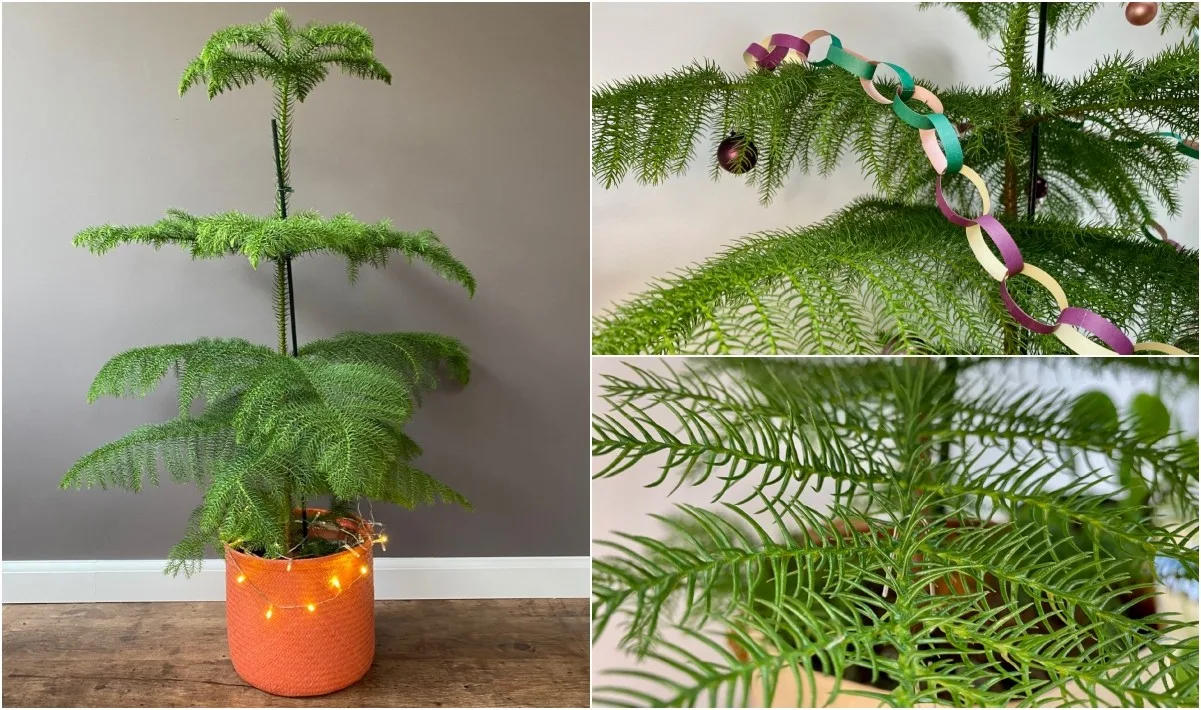
Right about this time of year, when we’re getting ready to pull the Christmas decorations out of storage, my family faces a seasonal dilemma. Should we continue to use the artificial Christmas tree or should we get a real one?
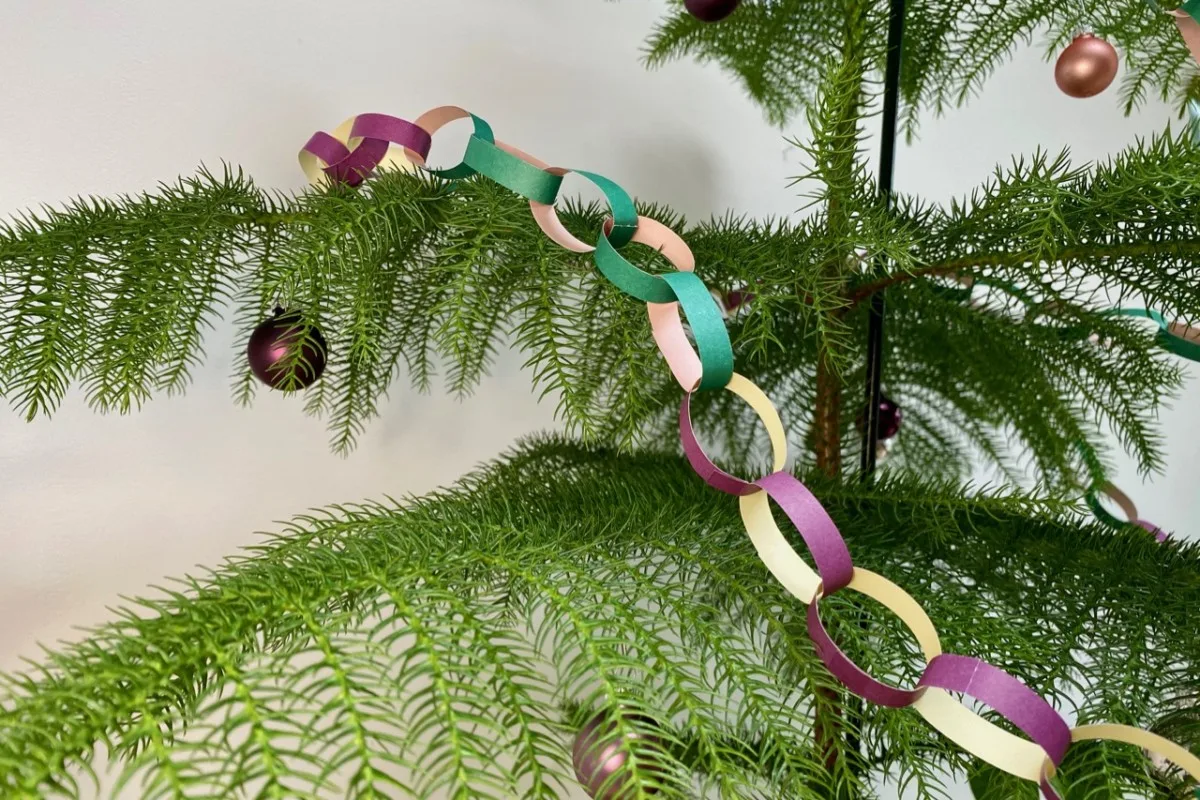
So far, getting more mileage out of the faux tree we already have has been on the winning side of this argument. Granted, aided by the fact that we don’t constantly collect pine needles on our socks and don’t have to dispose of a dead tree every year.
Unlike our editor, Tracey, who is a diehard real Christmas tree fan and makes a convincing case for them, there’s only so much rejoicing in a real tree I can take while vigorously vacuuming the rugs for the third time that day. But we do miss having something that feels more “alive” to use as seasonal decor, so something’s got to give.
Enter the Norfolk Island Pine.
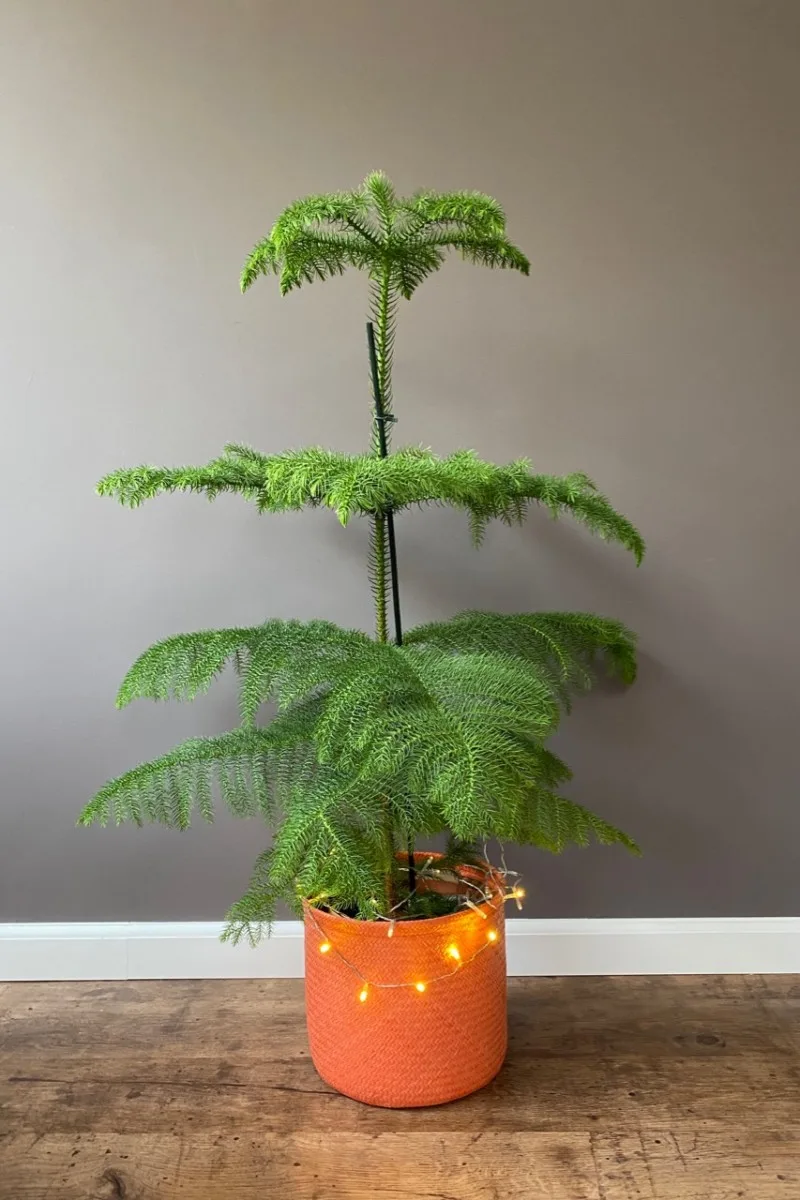
If you, too, are looking for a living Christmas tree alternative, then this is the houseplant for you. Its evergreen tiered branches, slender triangular shape and upright stem make it the perfect impersonator of the Christmas spruce and the festive fir.
Here are some tips on how to take care of this beautiful ornamental plant.
So what is a Norfolk Island Pine?
Norfolk Island Pine (Araucaria heterophylla) is not technically a pine, but it does belong to an ancient coniferous family named Araucariaceae. This plant is native to Norfolk Island, an island located in the Pacific Ocean between Australia, New Zealand and New Caledonia. In fact, the Norfolk Island Pine takes center stage on the island’s flag.
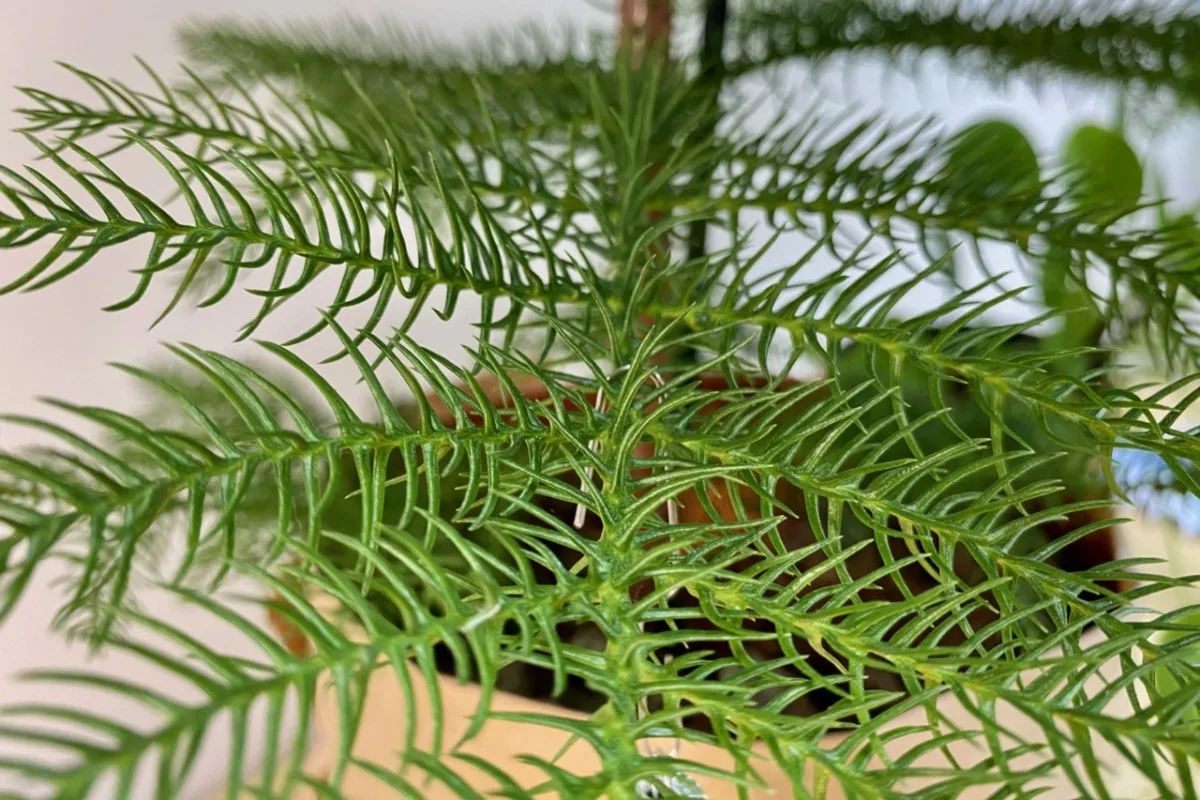
In its native habitat, the Norfolk Island Pine can grow as tall as 200 feet (roughly 60 meters) with a trunk that can span 10 feet (3 meters) in diameter. But in the Northern hemisphere, you’re more likely to find Araucaria grown as a houseplant. And its sales figure skyrockets precisely at this time of year.
Even more proof the Norfolk Island Pine is a popular indoor plant at Christmas time.
Is the Norfolk Island Pine suitable as a Christmas tree replacement?
In my humble opinion, the answer will always be yes. But I’m very curious if our readers agree. (You can let us know on our Facebook page.)
Here are a few scenarios when you might consider this houseplant the perfect Christmas tree alternative:
You want the look of a real Christmas tree, but don’t want to bother buying a new one every year. (That’s me!)
You want something to decorate for Christmas, but aren’t keen on the routine of putting up or taking down an artificial tree. (Sometimes me!)
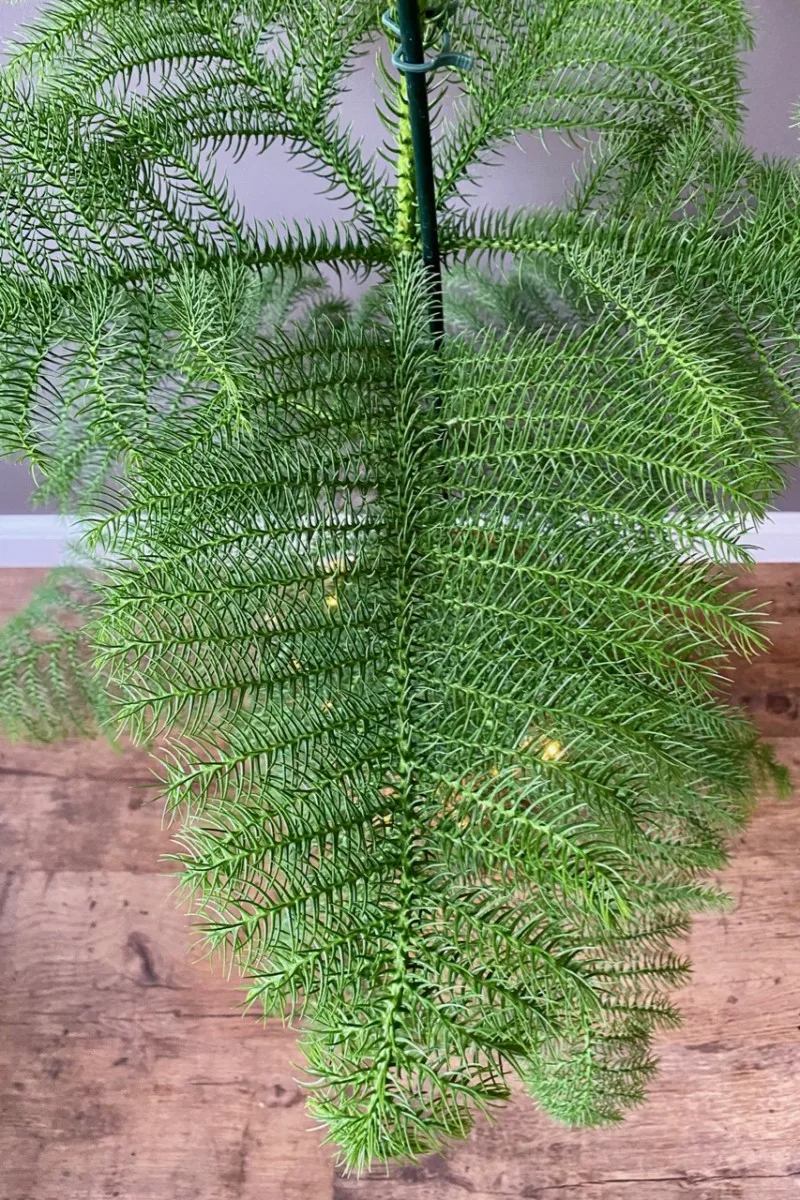
You’re allergic to pine. Let me remind you that the Norfolk Island Pine is not technically a pine tree.
You’ve tried buying potted Christmas trees, but you’ve also failed at keeping them alive after you’ve transplanted them outdoors. (Raises hand!)
You’re on a low budget and buying a real Christmas tree feels eerily similar to setting fire to a $100 bill. (You’re not wrong!) FYI, depending on the size of the Norfolk pine, it can go anywhere between $20 and $60. But you won’t throw it out a month from now. Not if you read our care guide.
You’re not particularly chuffed at the thought of vacuuming pine needles off your carpet every day between Thanksgiving and New Year’s. You’re in luck, the Norfolk Island Pine doesn’t shed its needles.
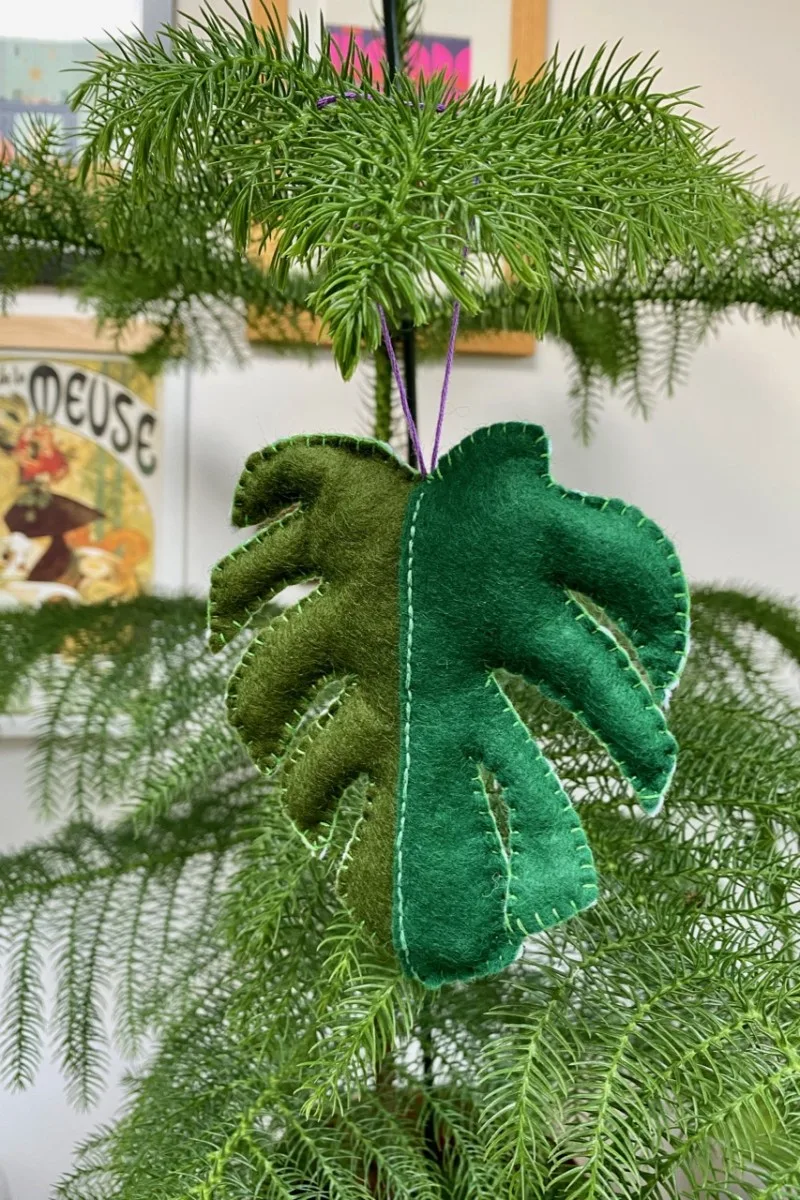
You don’t have the space to store an artificial tree for eleven months of the year. (Hello, fellow renters!)
You like the idea of a Christmas tree, but you’d like a small one that won’t take up too much space on tabletops, counters or mantels.
Have I convinced you to get a Norfolk Island Pine?
Most of the ones for sale in the United States are grown in Florida, but at this time of year, you’ll find them in any local garden center. I’ve seen them for sale at the friendly Swedish furniture retailer as well as a mom-’n-pop plant nursery. You can even buy them on Amazon.
Here’s what you should know about its care requirements to enjoy it for many Christmases to come.
1. The Norfolk Island Pine likes bright indirect light.
And lots of it. Norfolk Island Pines need bright indirect light to keep growing consistently. Remember that ‘bright’ refers to the intensity of the light, and ‘indirect’ refers to the direction.
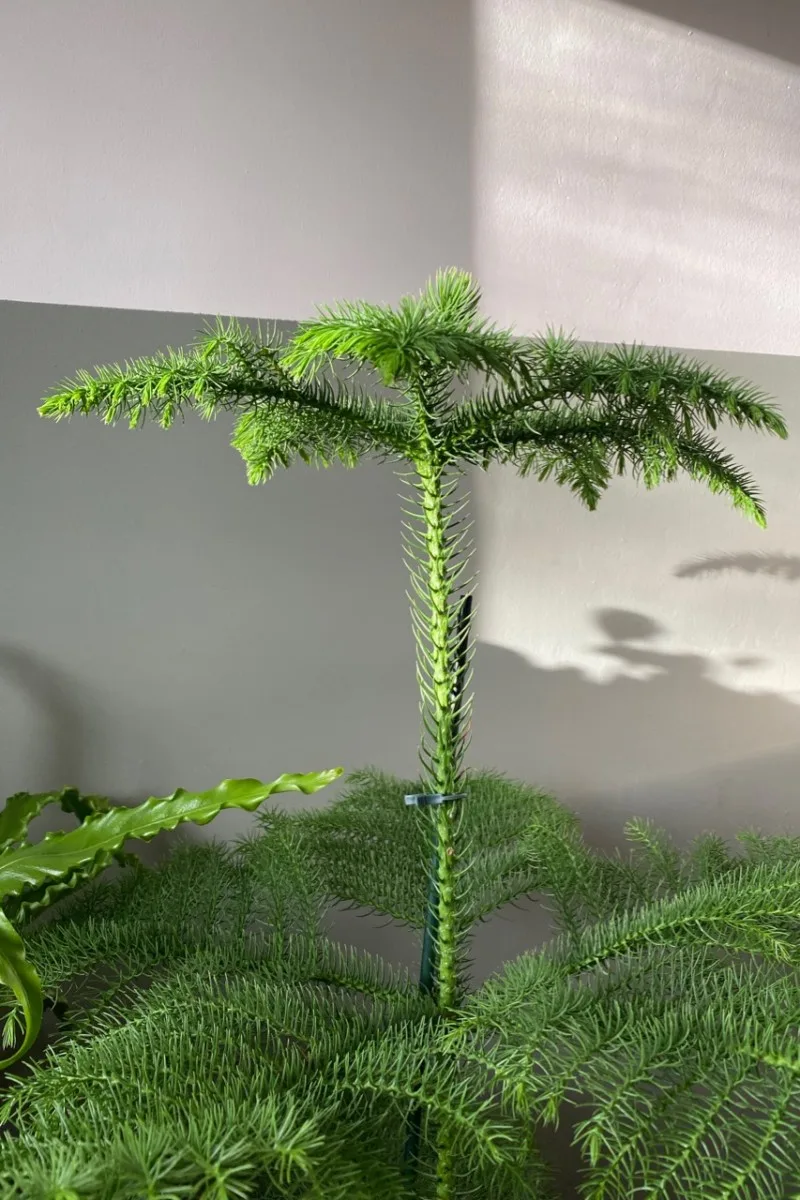
While not a particular concern during the winter, don’t leave your Norfolk Island Pine in a spot that gets direct sunlight in the spring and summer. Too much direct sun will cause leaf damage, especially on a smaller houseplant.
Norfolk Island Pines can tolerate lower levels of light, but they need to adjust to it gradually. During the adjustment period, the lower limbs of the plant might turn yellow or brown and even fall.
If this happens as soon as you bring the plant home, rest assured that it’s not anything you’ve done. It’s just a sign that the plant is transitioning from the high humidity and bright light of the grower’s greenhouse to the relatively lower light levels in your home.
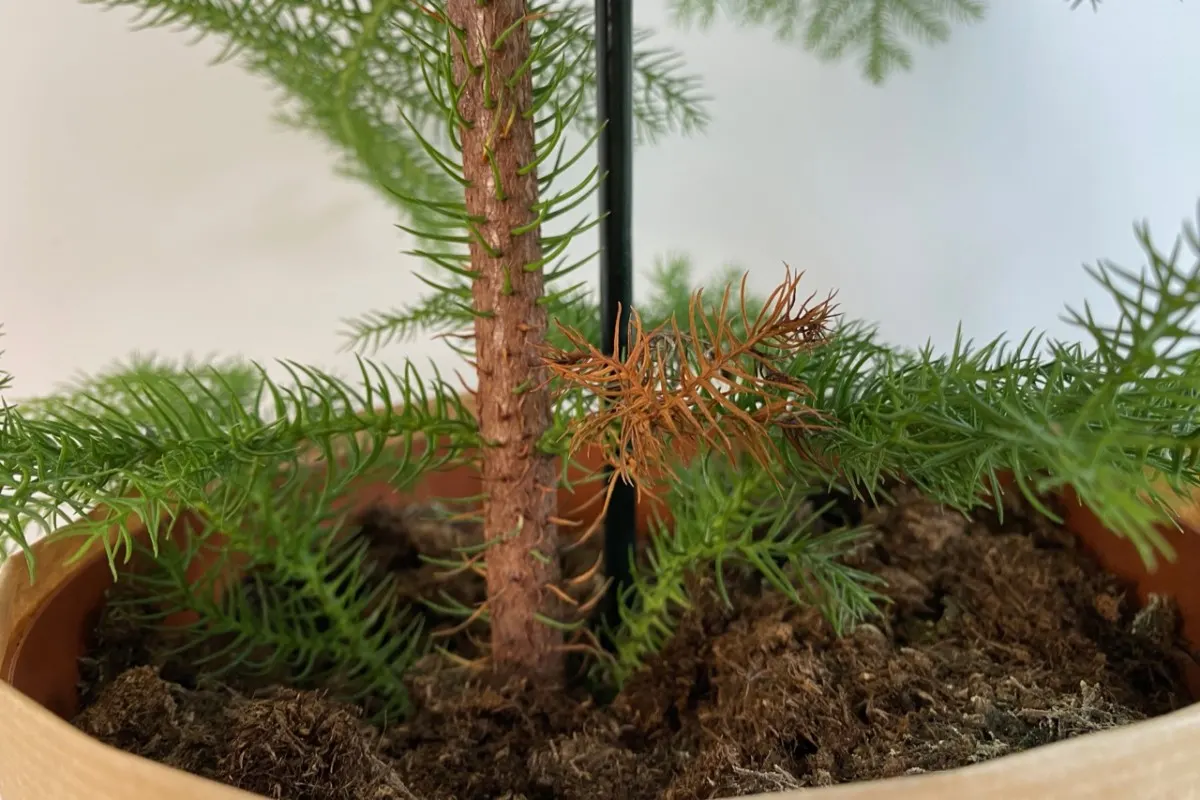
2. Your Norfolk Island Pine will thrive in high humidity.
Speaking of humidity, let’s not forget that this is a tropical plant that grows in coastal regions in a naturally humid climate. This means that your Norfolk Island Pine will need some extra humidity when you keep it confined indoors.
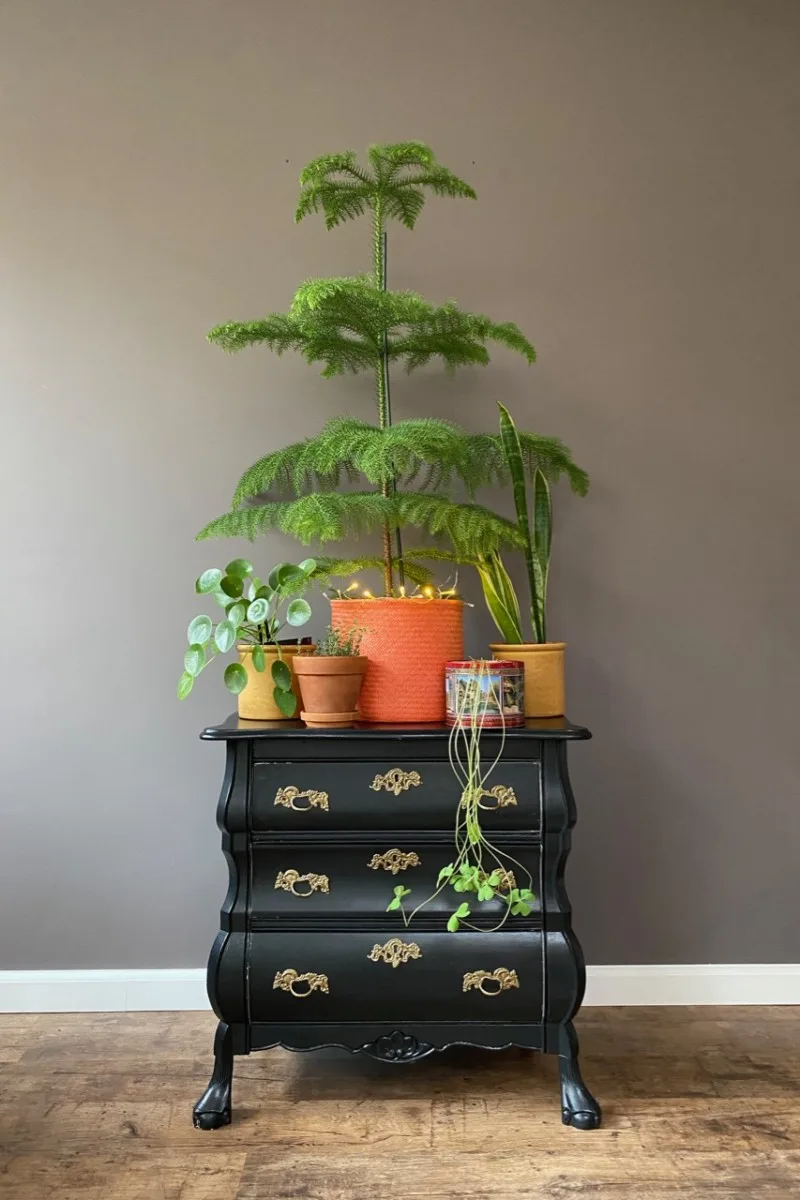
You can increase the humidity around your plant by grouping several plants together. Due to the process of perspiration, the humidity around the grouping will be higher than that around just one plant.
Another method to increase air humidity is by setting up a “wet tray.” This can be a simple plastic or metal tray. I prefer to use an aluminum cooking sheet with a lip.
Place flat pebbles or shells on the tray and add enough water to cover the pebbles halfway up. Then place the plant pot on the pebbles. The evaporation of the water on the tray will increase the humidity around the plant.
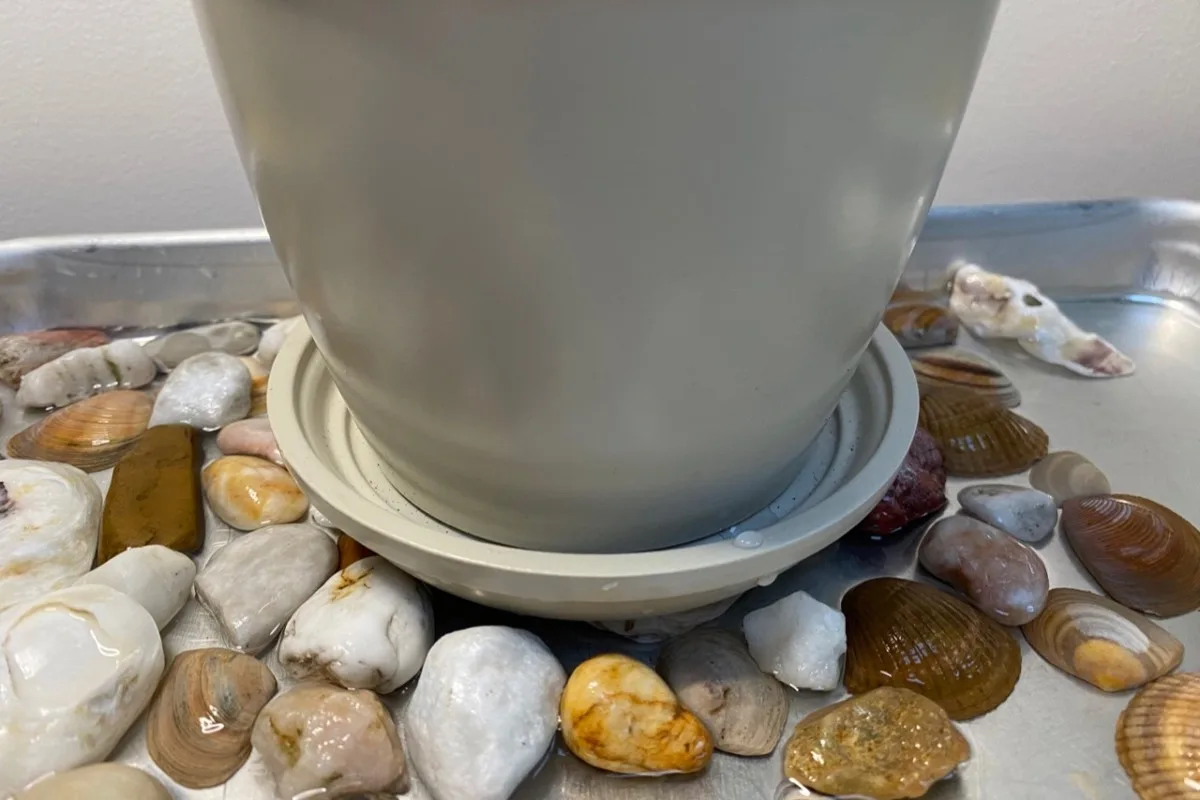
Increasing humidity is especially important in the winter when the air in our homes is more likely to be dry due to the use of fireplaces, heating vents or radiators.
However, don’t forget about this requirement in the summer either. Avoid placing your Norfolk Island Pine next to air conditioning units or dehumidifiers.
3. Your Norfolk Island Pine does not like to have wet feet.
We’re not houseplant newbies around these parts, right? So we won’t make the rookie mistake of equating humidity with overwatering, right? Ok, let’s spell that out, just in case.
The biggest enemy of potted houseplants is overwatering. And that’s also very much the case for the Norfolk Island Pine. It does like water and can take up quite a bit, but it doesn’t like to have its soil permanently wet. Remember that in its natural habitat, this plant grows in sandy soils that drain fast and drain well.
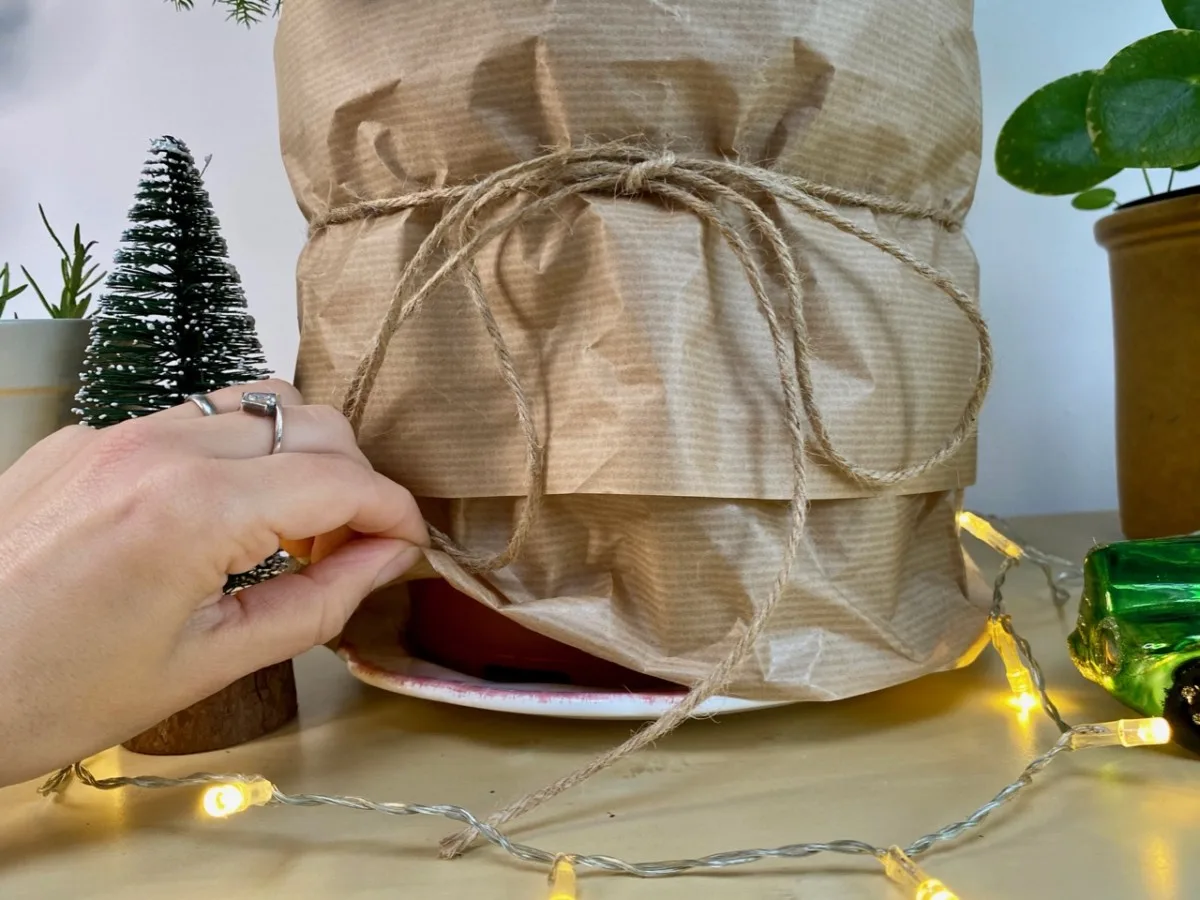
Before you give it another gulp, check the soil with your finger. If the top couple of inches of the potting mix feels dry to the touch, then it’s time to water your plant. Don’t let the roots rest in water, so drain any water that may have puddled up in the saucer.
If you buy the Norfolk Pine wrapped up in one of those shiny ornamental pot sleeves, remove the sleeve as soon as you bring the plant home. If you’d like to keep it, you can cut off the bottom of the sleeve in order to allow the excess water to drain through the drainage holes. It only takes a few minutes, so don’t skip this step.
My Norfolk Pine was wrapped in craft paper which was very handy for transporting the plant. But as soon as I got home, I removed the paper, cut it in half, then tied it back around the side of the pot (but not going around the base) for a rustic look.
4. The key to a thriving Norfolk Island Pine is consistency.
Although I wouldn’t call these houseplants high-maintenance, they’re definitely not the type of plant that you can easily forget about. (I’m looking at you, snake plant survivor!) But that doesn’t mean they’re fussy either.
Norfolk Island Pines are easy to take care of as long as they get adequate and consistent care.
Operative word: consistent.
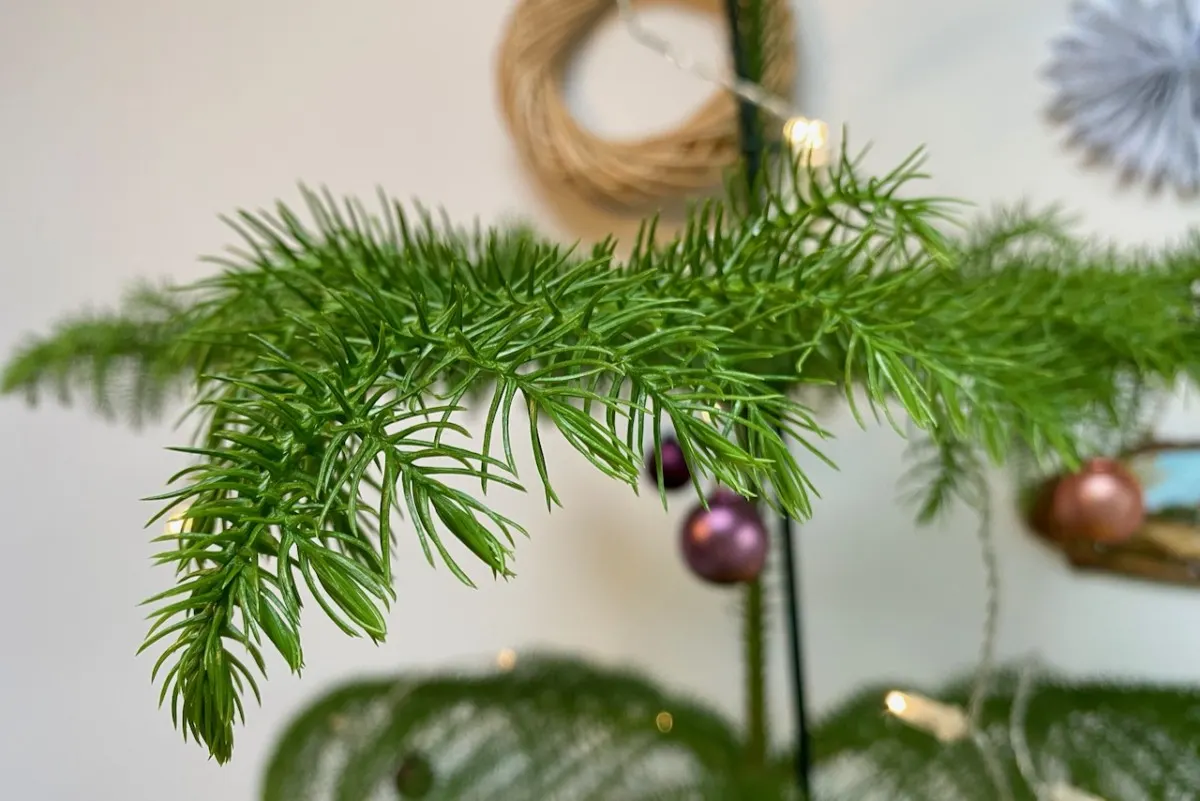
This houseplant doesn’t like frequent changes and may object to being moved around too often. It will be especially unhappy if there’s a noticeable difference in light and humidity between its previous spot and its new location.
Can I decorate my Norfolk Island Pine for Christmas?
The short answer: yes.
The long answer: yes, to a certain extent.
I know I’ve spent most of this post lobbying for using the Norfolk Island Pine as an alternative to cutting down a Christmas tree. Far be it from me to forbid you from adding a little bit of cheer to a plant that looks so ready to be festive.
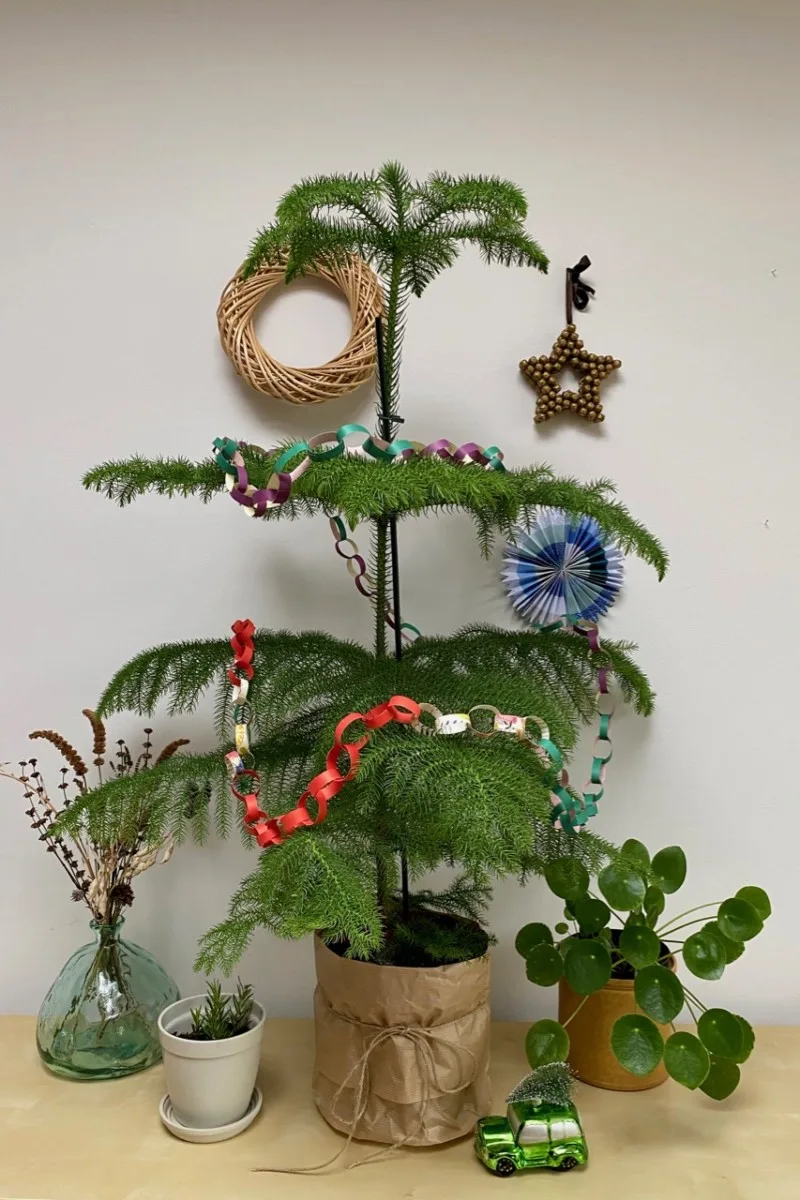
But be selective with your Christmas decor choices. At least if you want to keep enjoying the Norfolk Island Pine for Christmases to come.
Here’s what you can do and what you shouldn’t do when you decorate your Norfolk Pine:
You can:
- Use small decorations made of light materials such as felt, paper and foam;
- Use small glass baubles;
- Hang small ribbons and bows;
- Decorate with paper chains and popcorn garlands;
- Hang short LED strands. But don’t hang the battery pack on the plant!
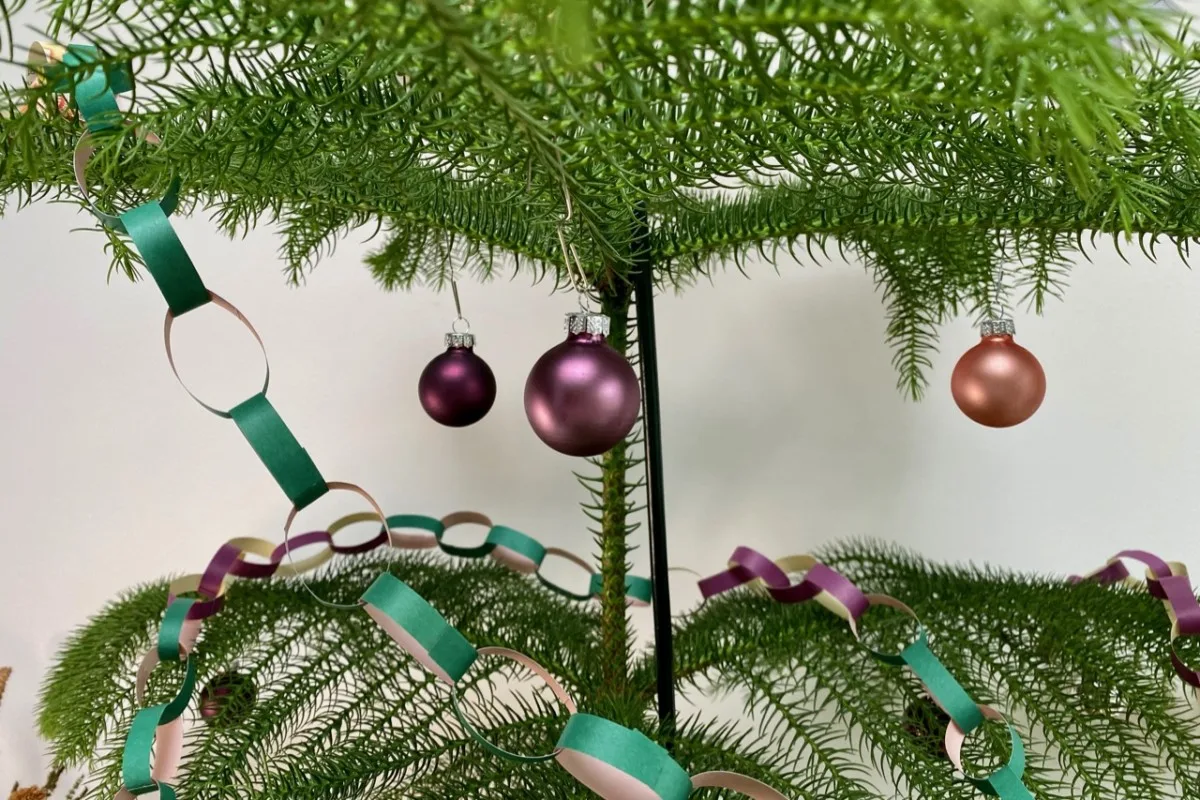
You shouldn’t:
- Go overboard with heavy decorations;
- Spray fake snow on your houseplants;
- Use any type of glitter (that goes for natural “eco glitter” as well);
- Hang incandescent lights that can give off too much heat;
- Pierce the leaves with bauble hooks or paper clips;
- Spray paint the plant; In fact, avoid buying any plant that has been painted altogether.
If you usually keep your decorations up longer, make an effort this year and take them off the tree as soon as the holidays are over. Bearing the weight of decorations for six weeks is not exactly the best way to treat your houseplants.
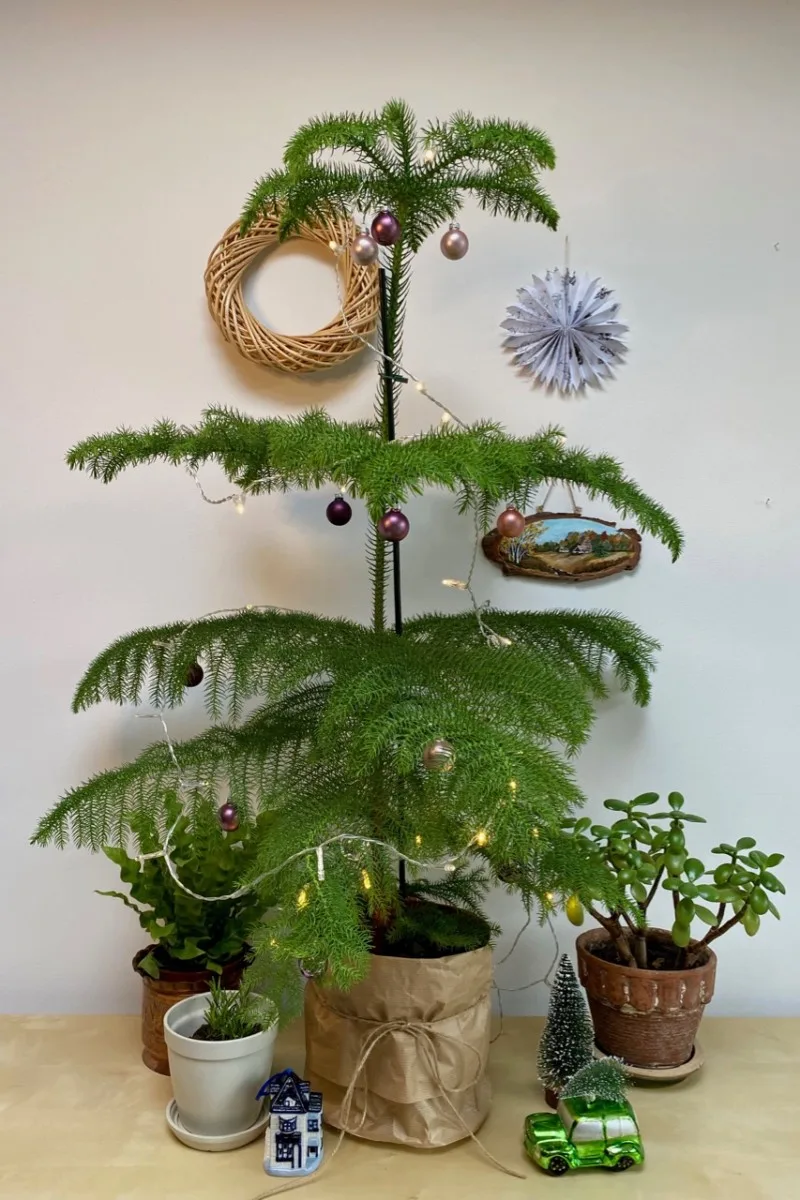
How tall will my Norfolk Island Pine grow indoors?
The good news is that the Norfolk Island Pine only grows about 3 to 6 inches (8-15 cm) every year if you keep it exclusively indoors. In ideal conditions, it would take about a decade for it to get to 6 to 8 feet (1.8 to 2.5 meters). This is the maximum height it will reach as a potted houseplant.
The plant will need staking once it reaches 3 feet tall (about a meter).
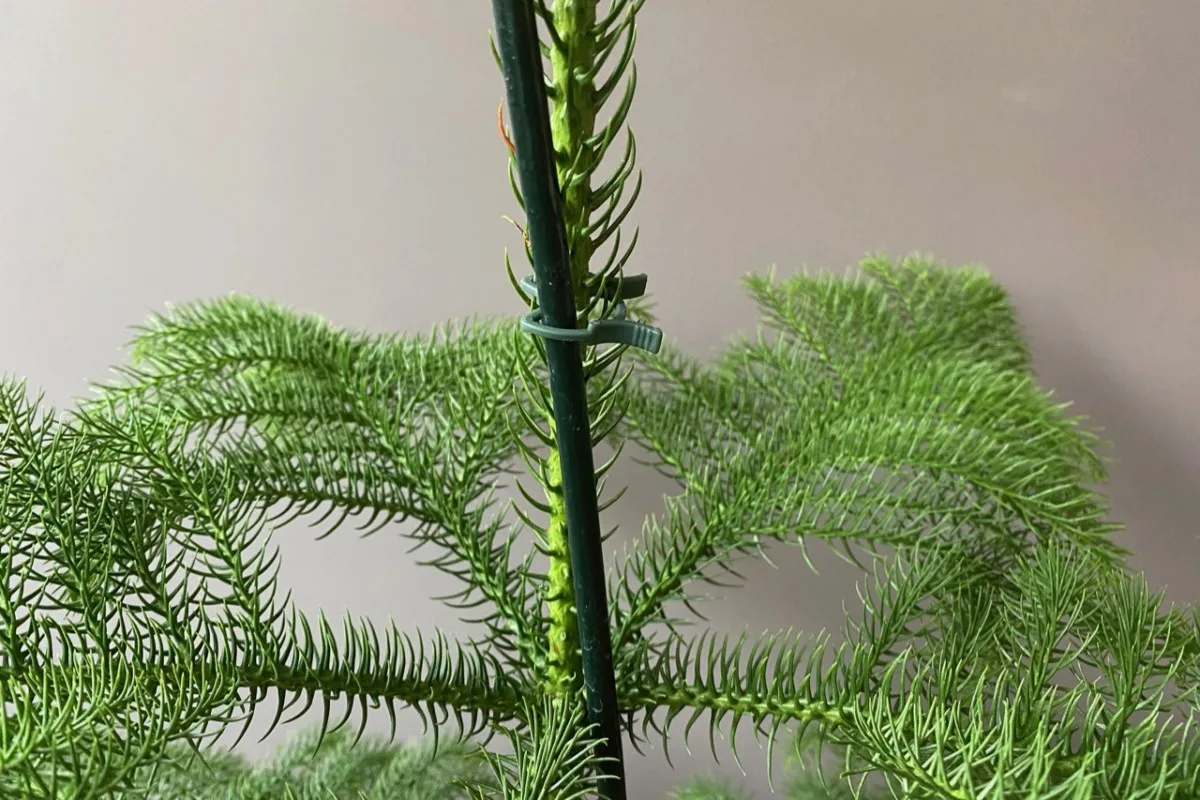
Can I move my Norfolk Island Pine outside?
Yes, if you want to accelerate this growth rate, you can move the Norfolk Island Pine outdoors; but don’t move it right after Christmas. Since this is a tropical plant, it can’t handle freezing temperatures. Wait until the temperature goes above 55F (around 13C) consistently before you send it packing off to spend the summer on the porch.
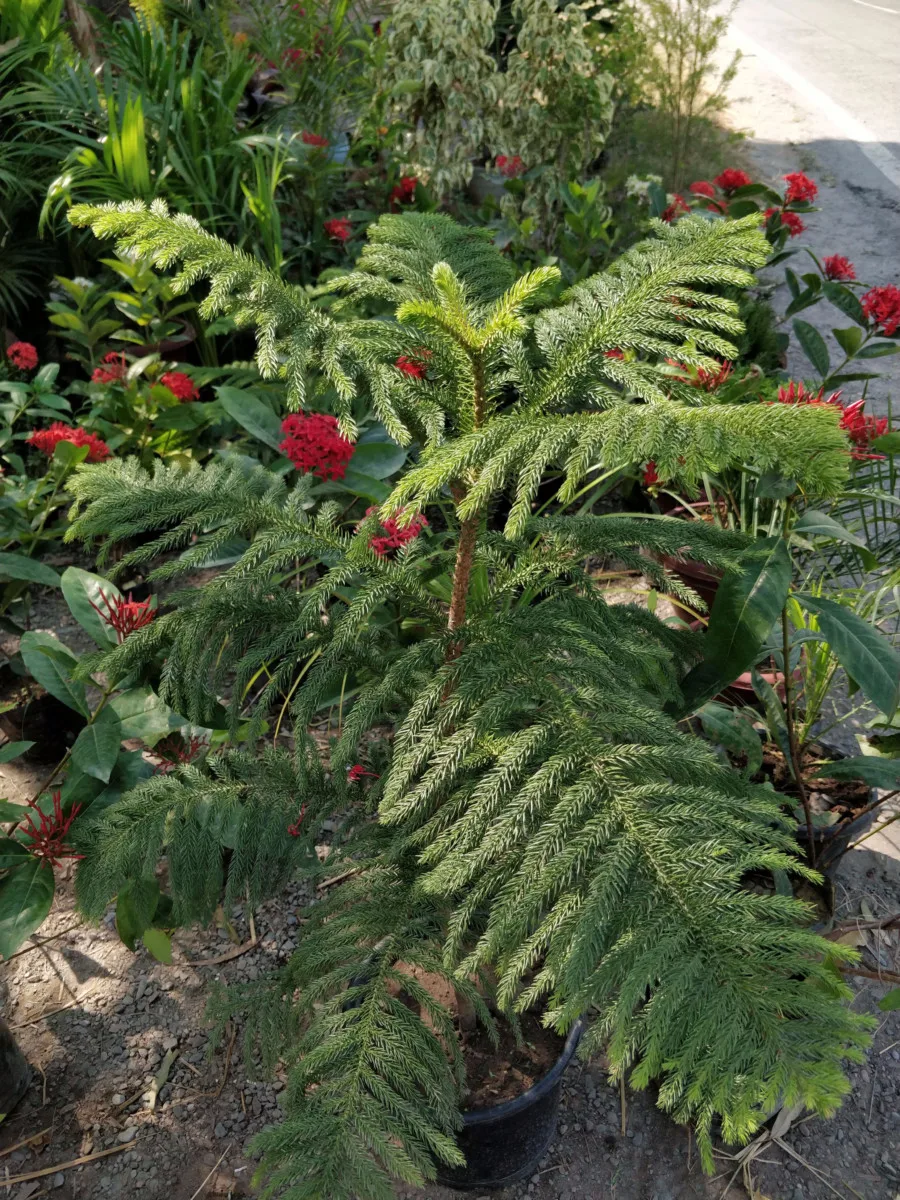
You can take this houseplant outside in late spring or summer and place it in a location that’s part shaded. Don’t forget that the bigger it gets, the more water it needs, so don’t let it dry out (or fry out) in the summer sun. And remember to bring your plant back indoors in the fall before the first frost.
Can I plant my Norfolk Island Pine outdoors after Christmas?
In some parts of the United States (most of USDA zone 10), you could grow a Norfolk Pine in your yard.
Due to its original habitat, this tree thrives in salty soil. However, you can’t let it fend for itself during periods of drought. Always water it well in the summer, especially if it’s a younger tree.
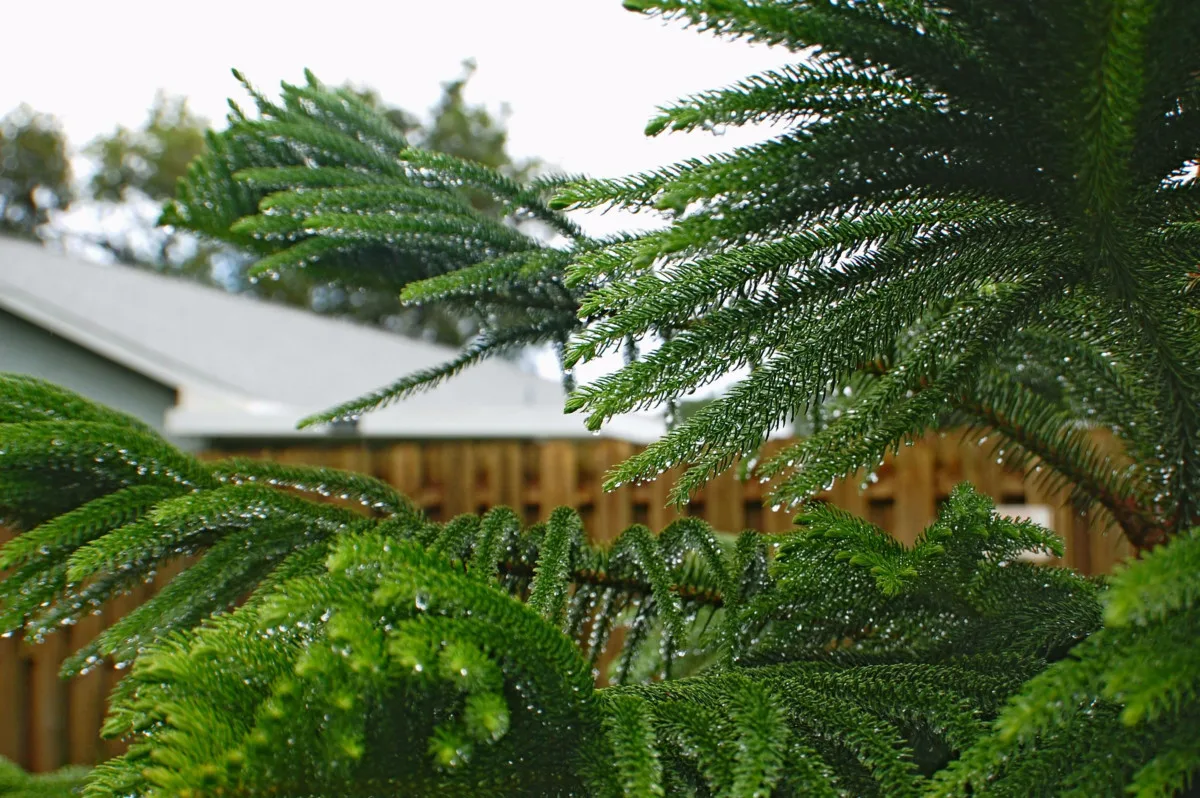
The Norfolk Island Pine planted outdoors in the US South won’t get as tall as its Pacific Ocean island counterparts, but it will grow to around 40 feet (12 meters) in parts of Florida, Texas and California. No matter how cute it may look as a baby, this will turn into a large tree. So avoid planting it too close to your home.
However, keep in mind that this plant is not hurricane-resistant, so it’s best to keep it as mobile as possible (you know, in a pot) if you live in an area prone to extreme weather events.
When should I repot my Norfolk Island Pine?
I used to be in the habit of repotting my houseplants every year until things got out of hand, and I acquire even more plants. So if you, too, are tempted to upgrade your plants to a new pot just as often, rest assured that you don’t have to give the Norfolk Island Pine the same treatment.
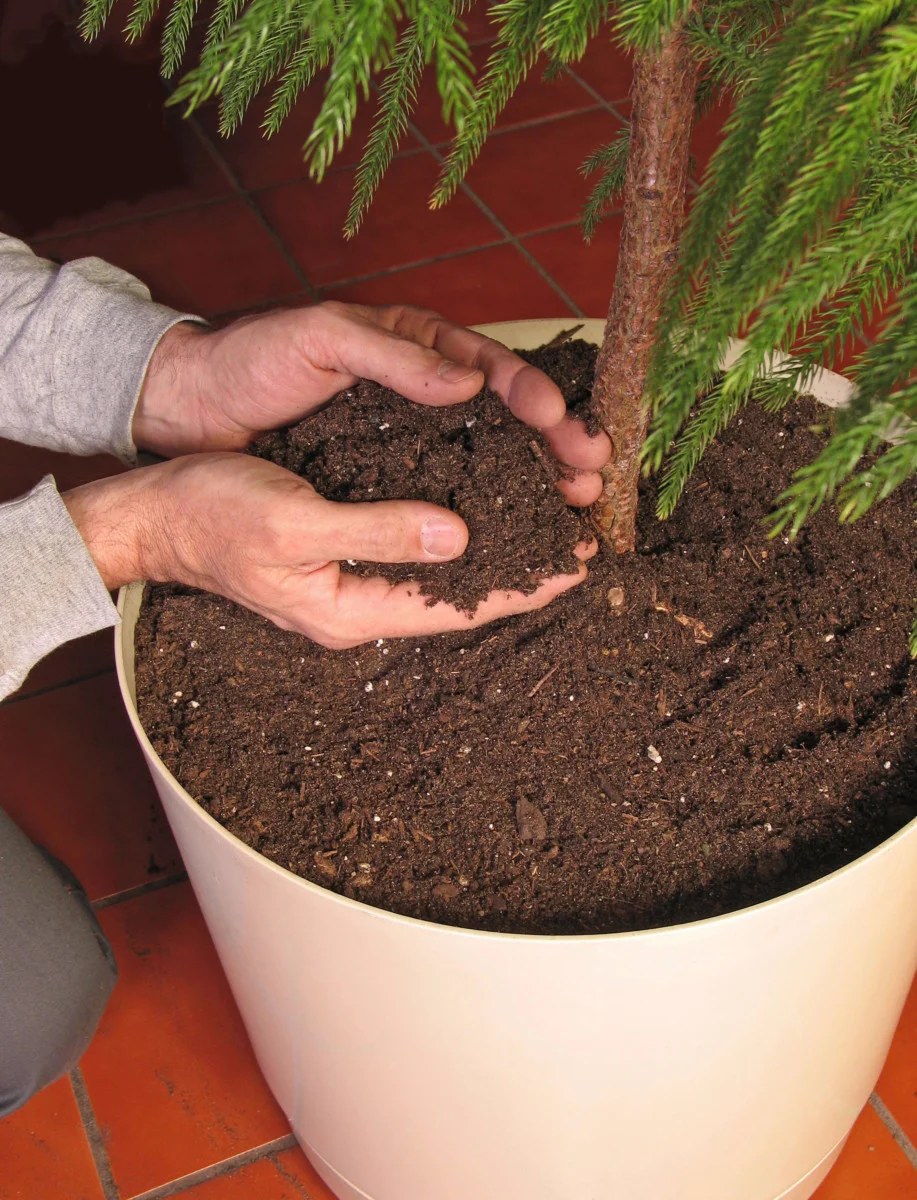
This plant prefers to be a bit pot-bound, and its roots don’t grow as fast compared to the height it towers at above soil level. It also doesn’t like to have its root system disturbed, so avoid doing so unnecessarily. Repotting it every other year or every third year seems to work best.
Whew! I think I pleaded quite the case for replacing a cut Christmas tree with the very-much-alive Norfolk Island Pine. If you get one this year, it might feel like part of the family by the end of the holiday season. Who knows, you might even create some fun new holiday traditions with this green fella.
Costa Farms are currently selling this 3-4 feet tall Norfolk Island Pine with a modern planter and plant stand.

Get the famous Rural Sprout newsletter delivered to your inbox.
Including Sunday musings from our editor, Tracey, as well as “What’s Up Wednesday” our roundup of what’s in season and new article updates and alerts.


